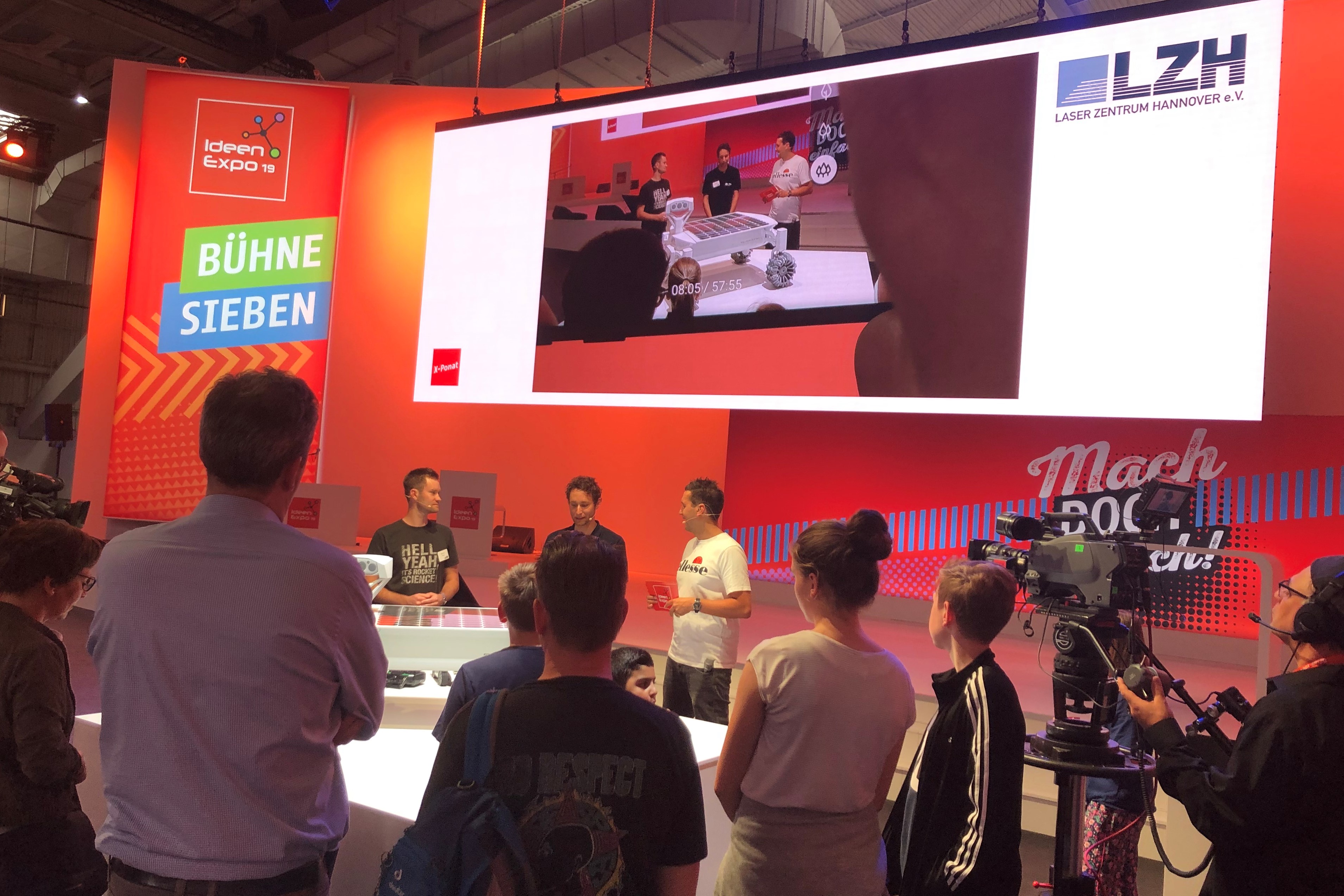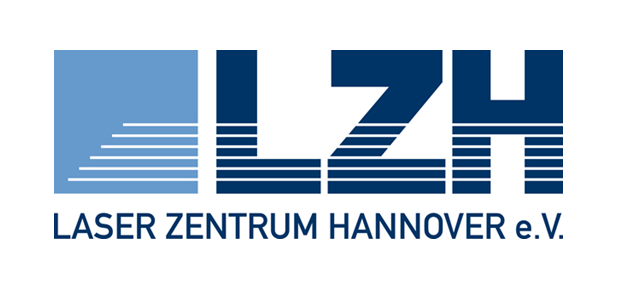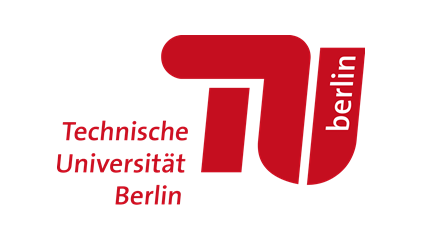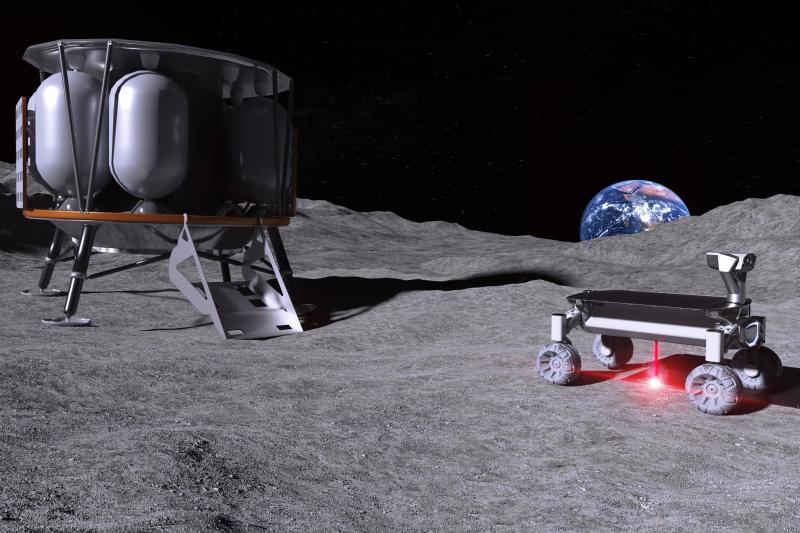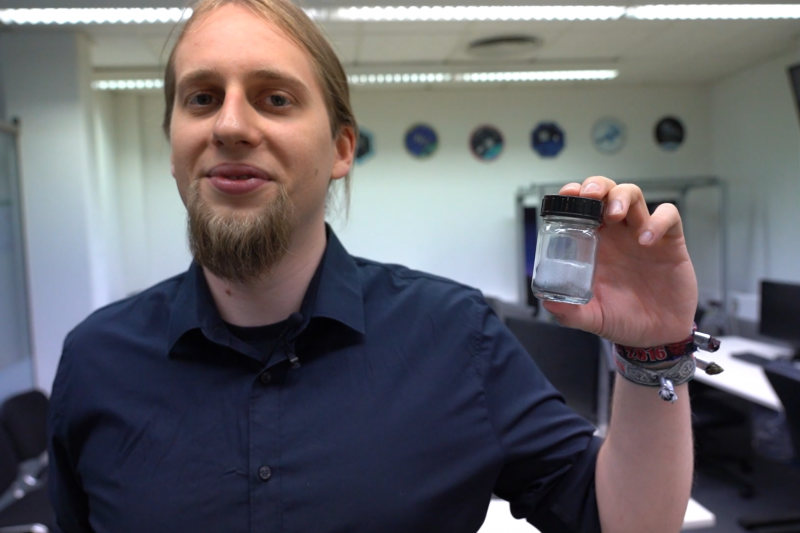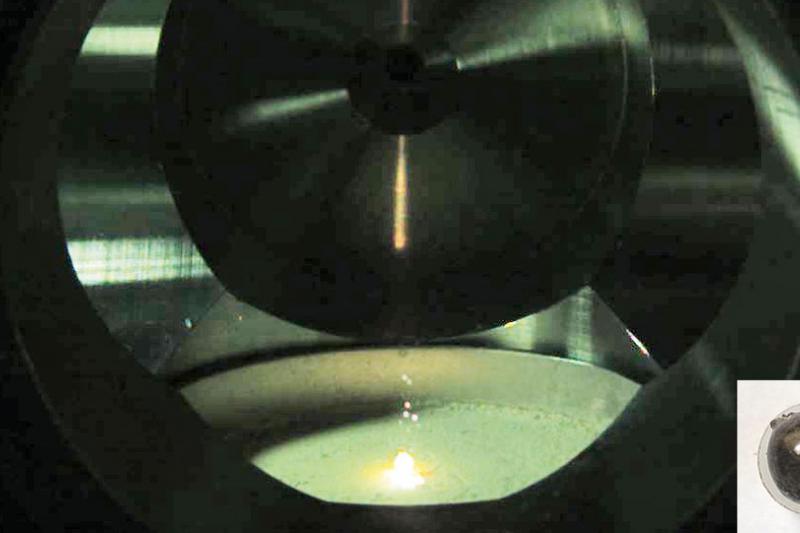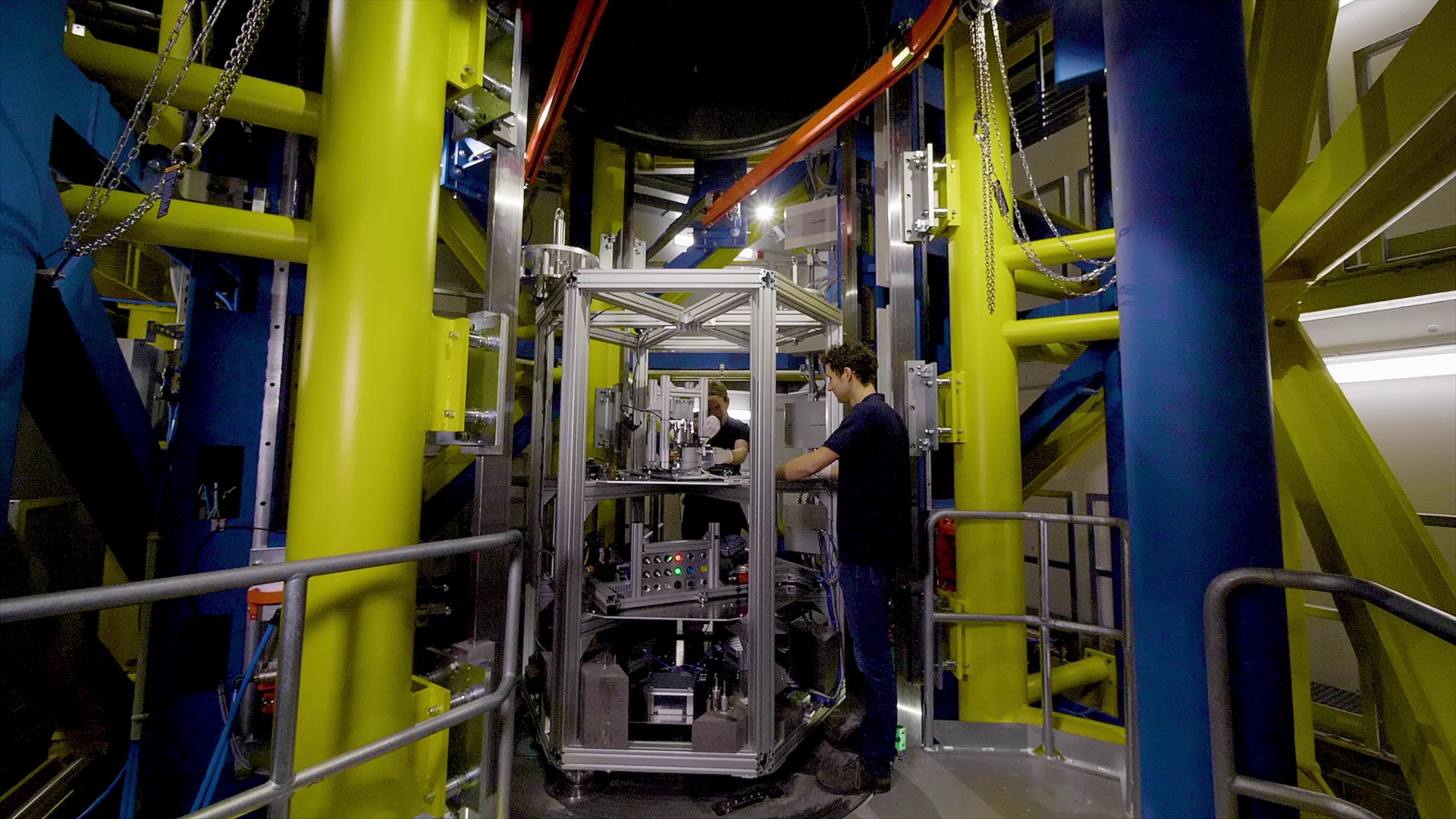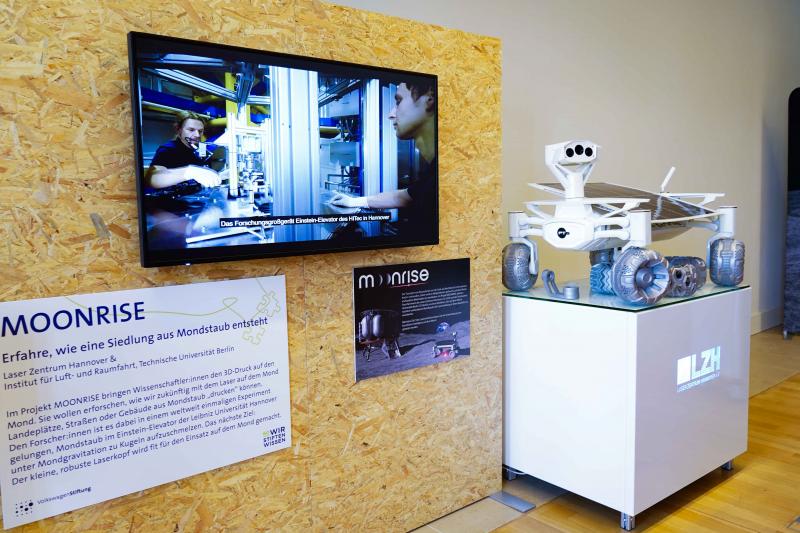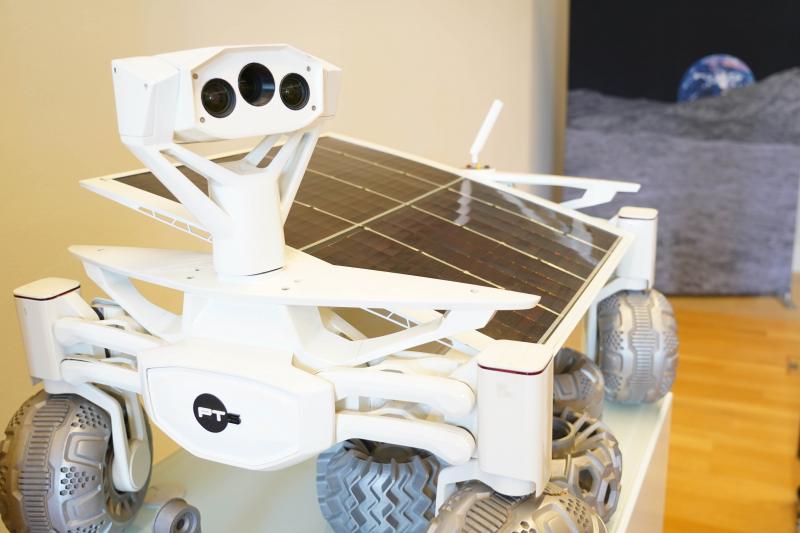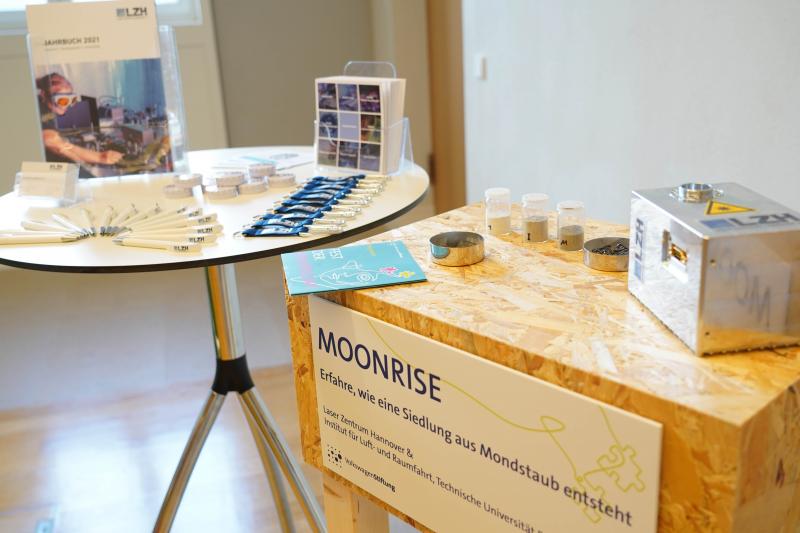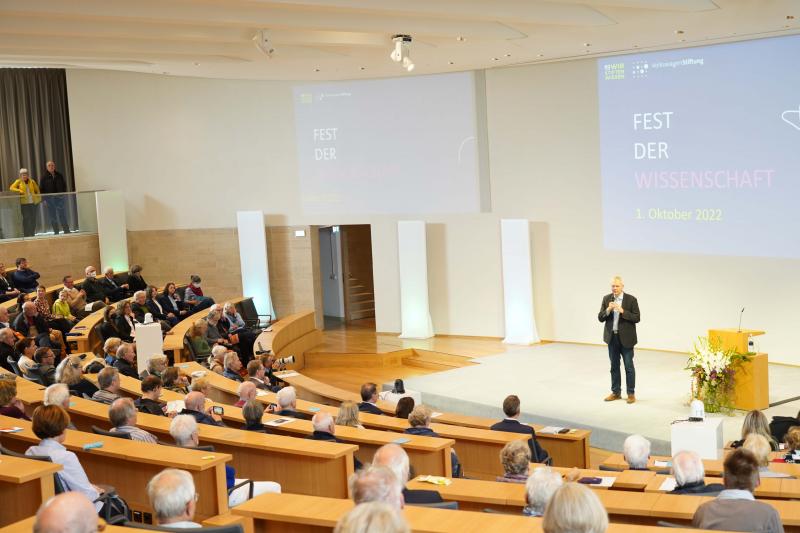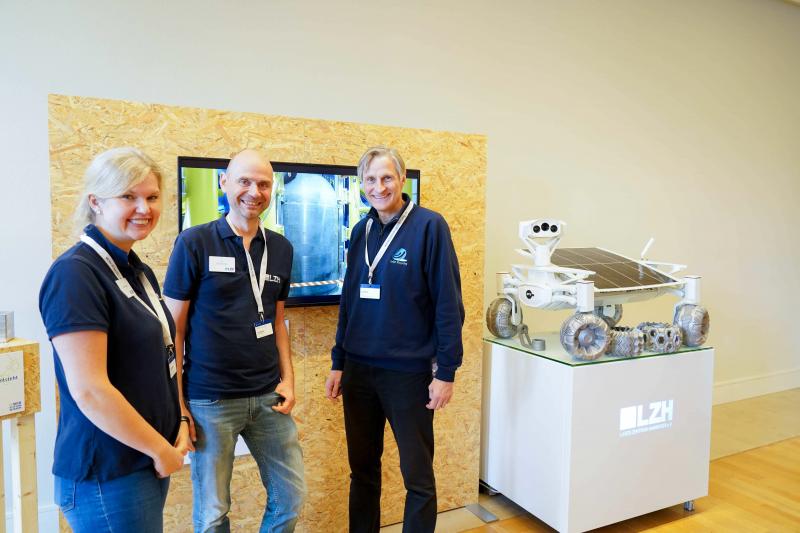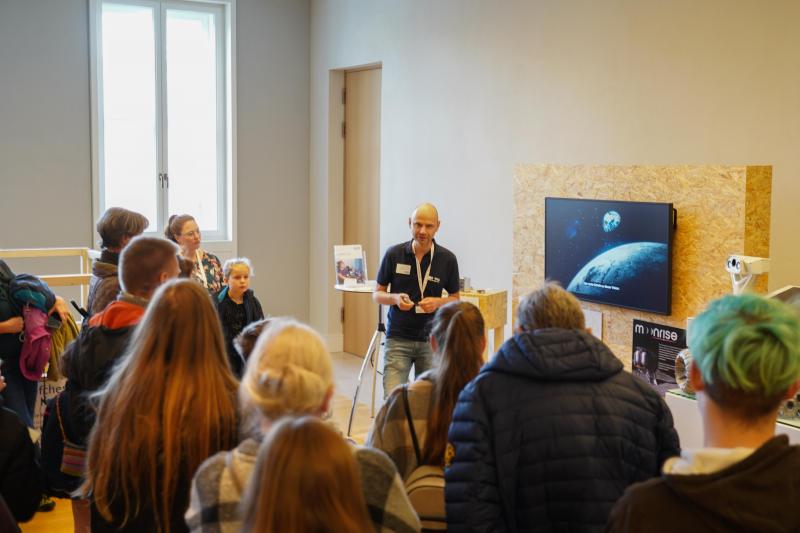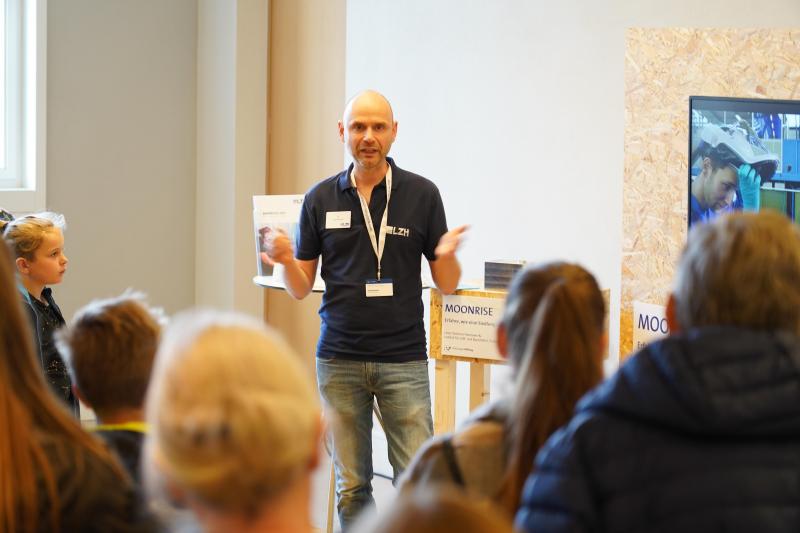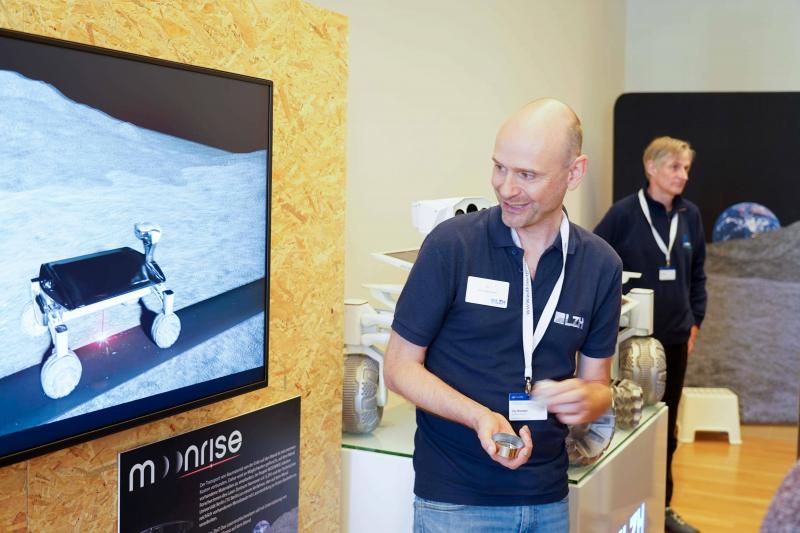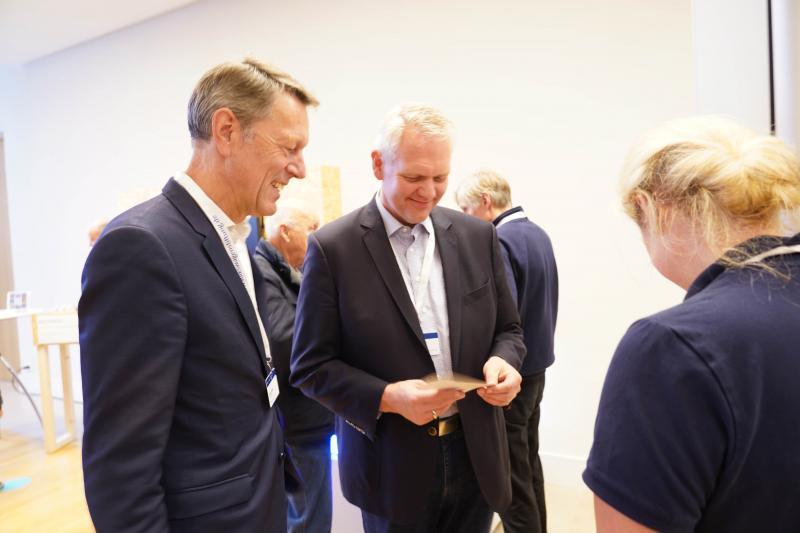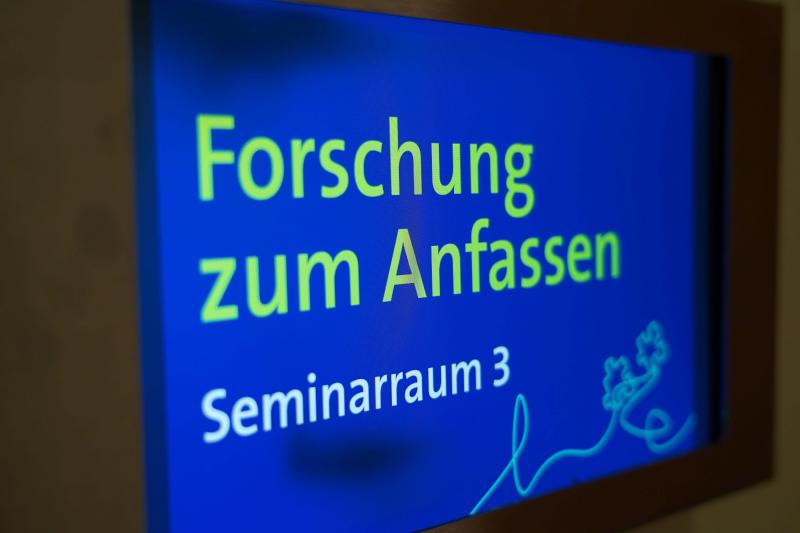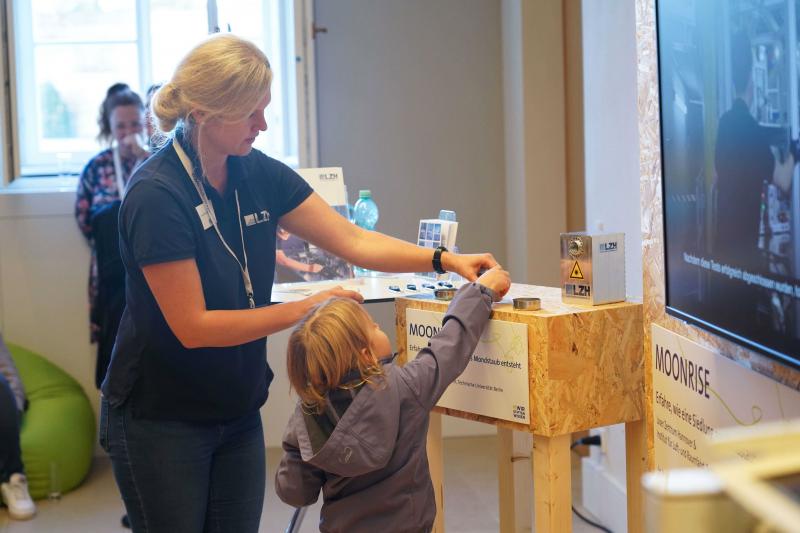MOONRISE
The Project
In the MOONRISE project, scientists are bringing 3D printing to the Moon. The goal is to explore how we can use lasers in the future to create landing sites, roads, or buildings from lunar dust, also known as regolith. Together with the Institute of Aeronautics and Astronautics at the TU Berlin, the Laser Zentrum Hannover e.V. will bring a laser system to the moon to test the laser melting of regolith.
Artificial intelligence will help analyze the molten lunar dust, providing AI-based process and quality control for scientists on Earth.
The foundations for the project were already established in the predecessor project funded by the Volkswagen Foundation, in which the research team successfully melted regolith in the Einstein Elevator under lunar conditions. You can find out more about this in our MOONRISE film. MOONRISE's project partners are the Laser Zentrum Hannover e.V. and the Institute of Aeronautics and Astronautics at the TU Berlin. The project will run for three years and is funded by the German Federal Ministry for Economic Affairs and Climate Action (funding code 50WP2206A). The project sponsor is the German Aerospace Center (DLR).
News
The Beginnings of MOONRISE
Researchers have already laid many important foundations for the MOONRISE project: A team of scientists from the Institute of Space Systems (IRAS) at the TU Braunschweig and the LZH succeeded in melting regolith into spheres in the Einstein elevator under lunar gravity. They also tested the developed laser on the MIRA3D rover of IRAS in the laboratory.
The first phase of the research project was funded by the Volkswagen Foundation.
Contact
Dr. rer. nat. Jörg Neumann
Gallery
